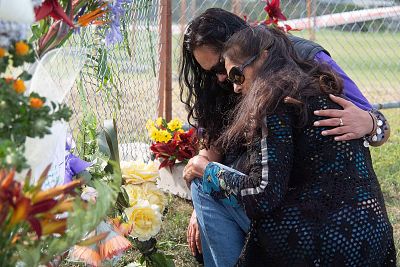"Those deploying to the island will likely encounter serious physical and chemical hazards," an official said.
Grieving relatives of those killed by an eruption at a New Zealand volcano this week will have to wait for the bodies to be recovered because it's still too dangerous to step foot on the island, officials said Wednesday.Fourteen people are feared dead on White Island some 30 miles off the coast of New Zealand's North Island. They were among 47 tourists — nine from the United States — who were visiting the volcanic island when part of it exploded Monday in a hail of burning ash, steam and gas.Many survivors suffered severe burns and New Zealand officials said they have ordered 1,300 square feet of skin from the U.S. to help treat their wounds.On Wednesday, officials said they still cannot go near the disaster zone."The environment on the island has changed, with increased volcanic activity since early this morning," said John Tims, deputy commissioner with New Zealand Police. "We are standing by and ready to go as soon as we can be confident that the risks on the island are manageable."
The government's geological research organization has warned that "the chance of a further eruption is significant and it is too dangerous to return to the island," Tims told reporters.The military and emergency services are now working on a plan of how to enter the deadly environment. Specialists are standing by to identify bodies if and when that happens."We are confident in our ability to deliver the rescue operation once we can be sure we can manage the very real dangers that anyone going onto the island would face," Tims added. "Those deploying to the island will likely encounter serious physical and chemical hazards, for which we must be prepared."Survivors have begun to recount in detail the horror in which this natural disaster played out. On Monday, pressure that had been building for months suddenly erupted into a powerful spray of 300-degree water.The blast also contained ash, rocks and a few boulders the size of exercise balls, but it was likely the scalding water that was most deadly, The Associated Press reported.Many of those on the island had taken a day trip from the Royal Caribbean cruise ship Ovation of the Seas. Those who survived the blast had terrible burns and some ran into the sea screaming.Lillani Hopkins, 22, had been to the crater and had just departed the island by boat when the eruption happened. Some of the injured were ferried on board by dingy, and Hopkins told the AP how she treated people with welts and burns that covered every inch of exposed skin.She said other people's faces were coated in gray paste, their eyes covered so they couldn't see. Some were still screaming, but she said others had tongues thickened so they couldn't talk."I really struggled to communicate because a lot were tourists and some didn't speak any English," she told the news agency. "It was really hard to try and figure out from them what was hurting. If they're just screaming like it's really hard to figure out where."
Among those wounded in the eruption were Matthew and Lauren Urey, of Richmond, Virginia, who were visiting the island while on their honeymoon."It's been a total nightmare," Lauren Urey's father, Rick Barham, told NBC News.He said that his daughter is undergoing treatment for severe burns on 25 percent of her body, while her husband was in intensive care as of Monday with burns on 80 percent of his body.The country's burn units are full to capacity, according to the country's Ministry of Health, and it is importing 1,300 square feet of skin from the U.S. "to meet the demand for dressing and temporary skin grafts," chief medical officer Dr. Peter Watson said.Questions still remain about why tourists were allowed on to the island just three weeks after New Zealand's geological hazard agency raised its "volcanic alert level."That rating went from 1 to 2, indicating that eruptions of steam, gas, mud and rocks could occur with little or no warning.Two subsequent updates on the GeoNet website in the following weeks said that the location and level of activity didn't "pose a direct hazard to visitors." The current alert level stands at 3.The chair of the company that ran tours of the volcano said only at level 3 did they start conferring with monitoring agencies, according to a report by New Zealand's state broadcaster RNZ.













